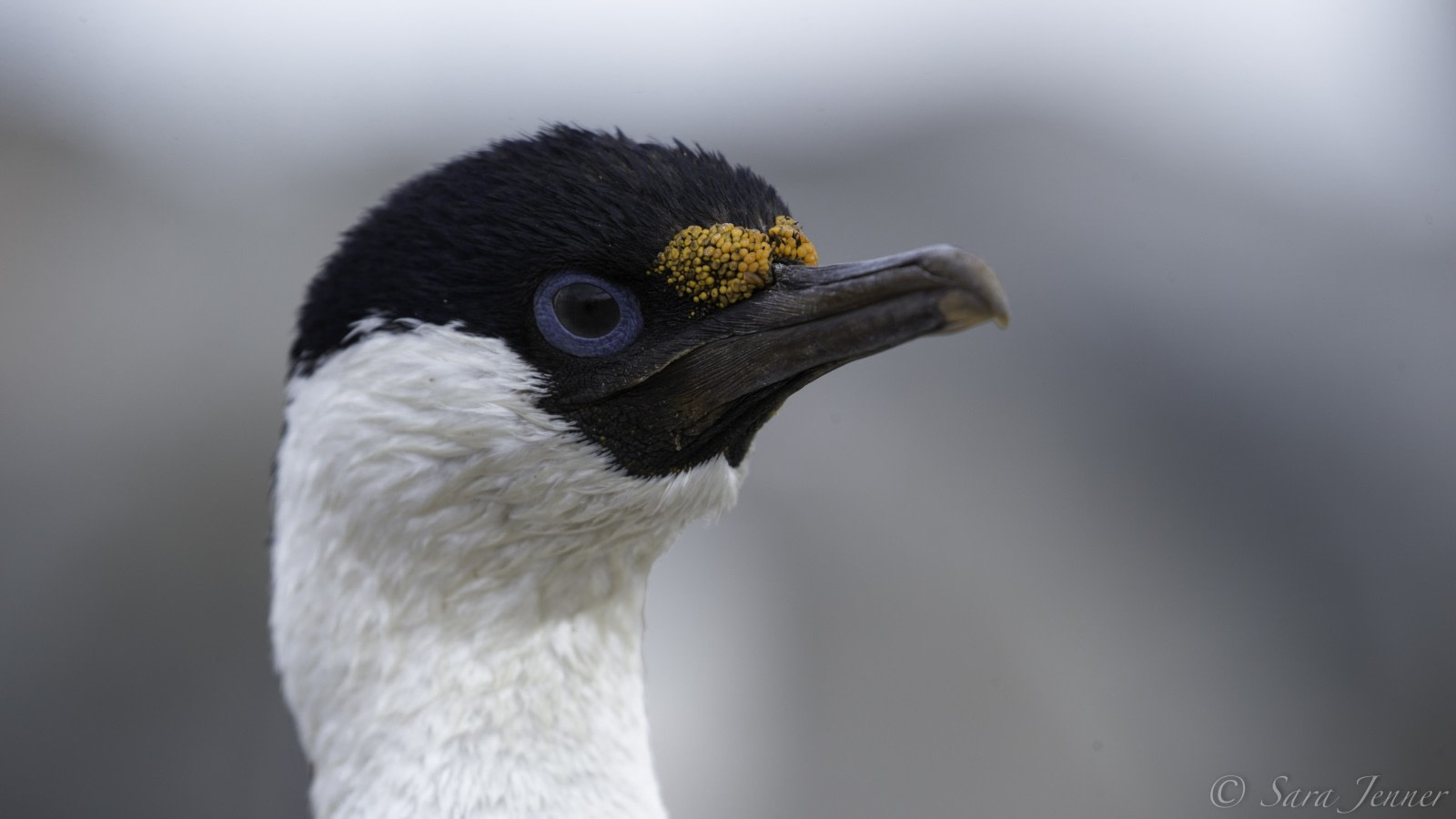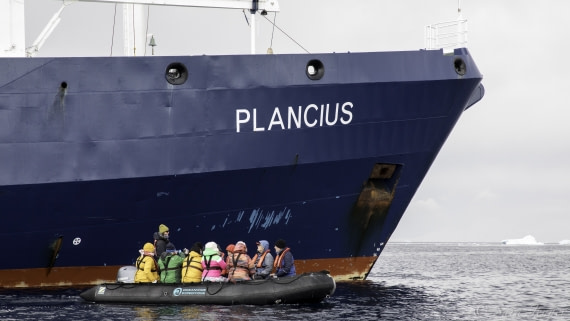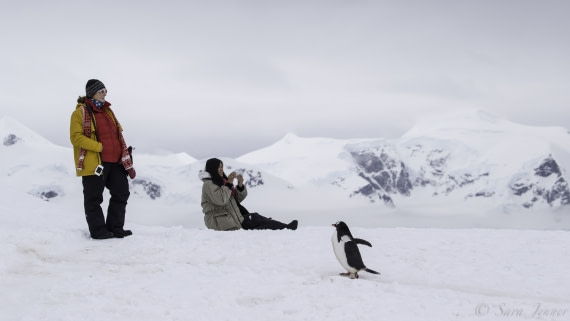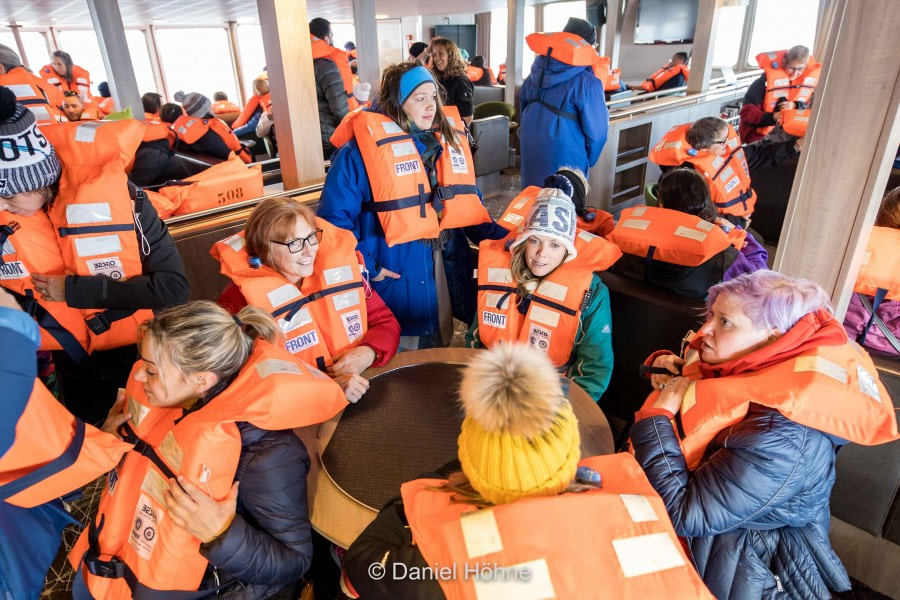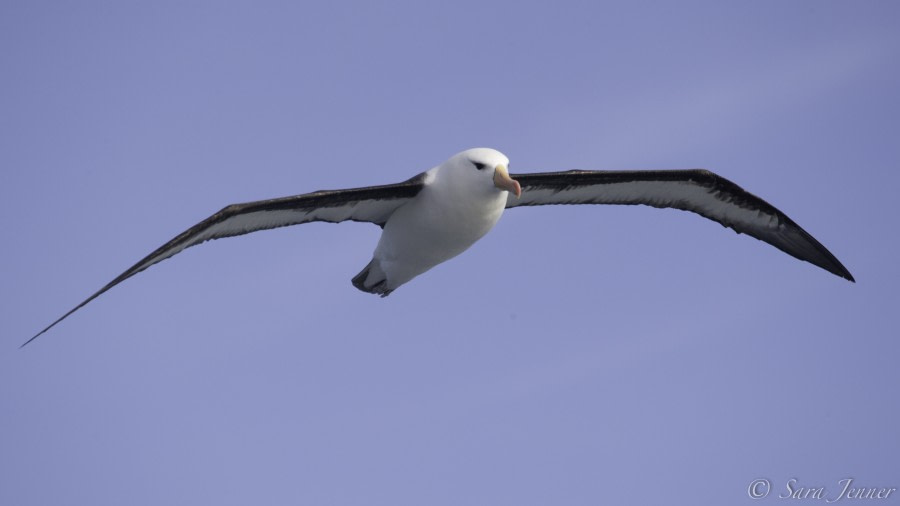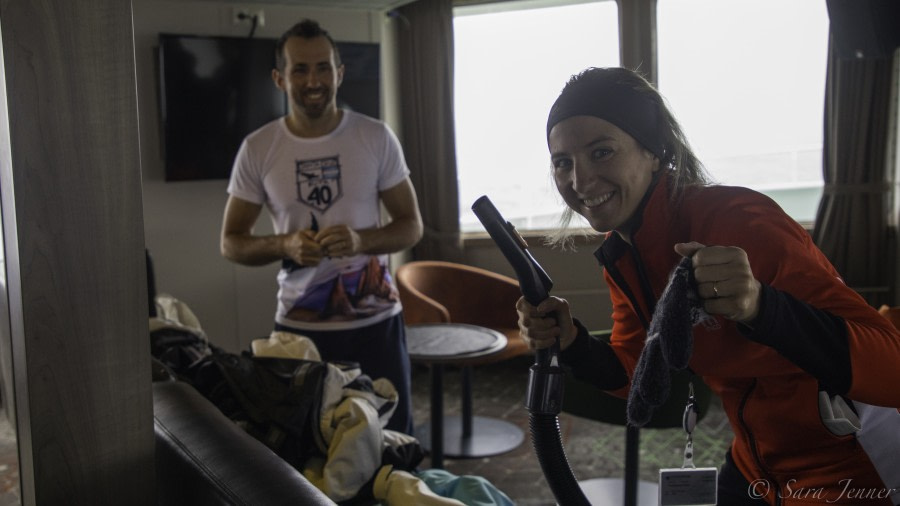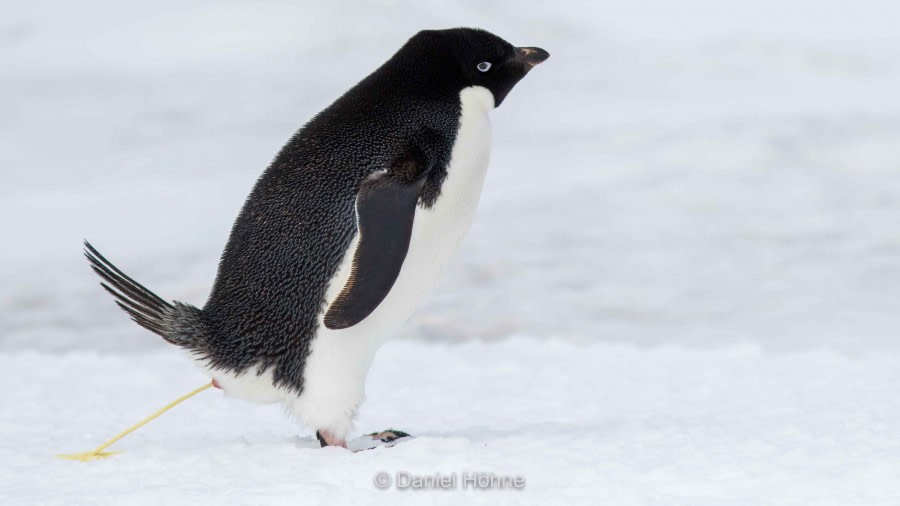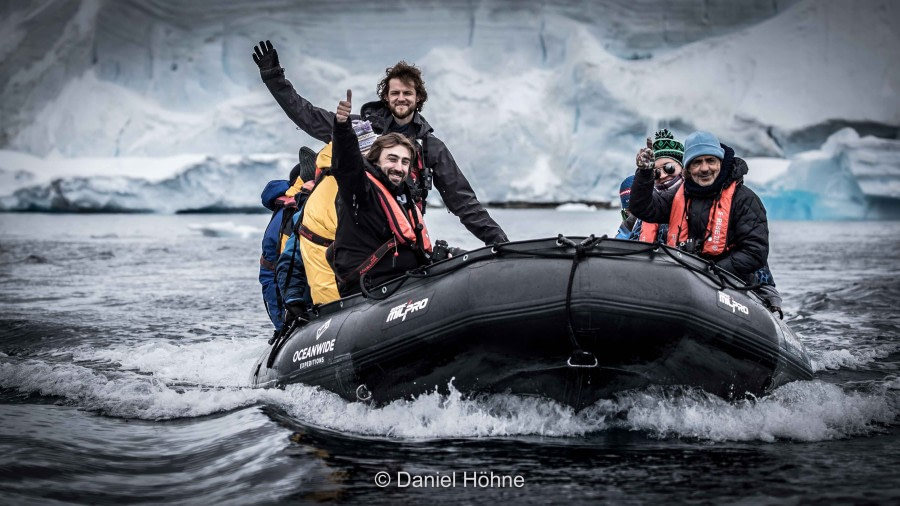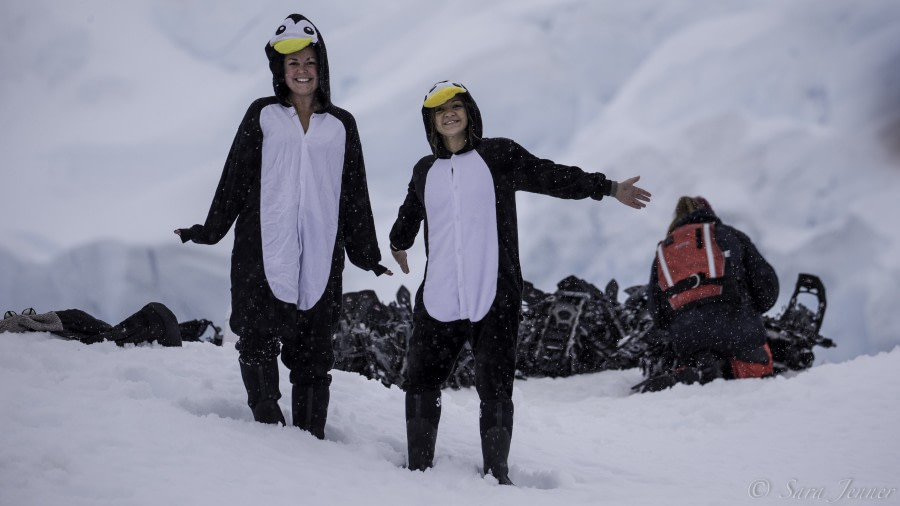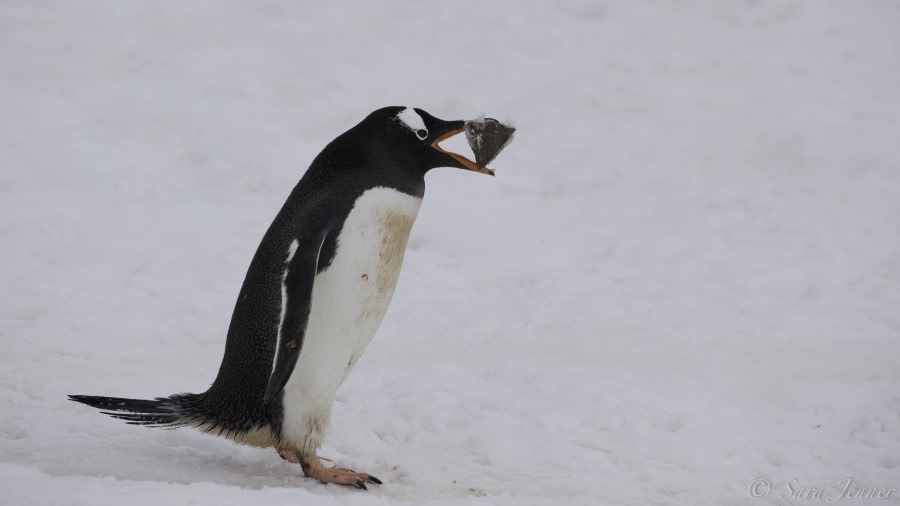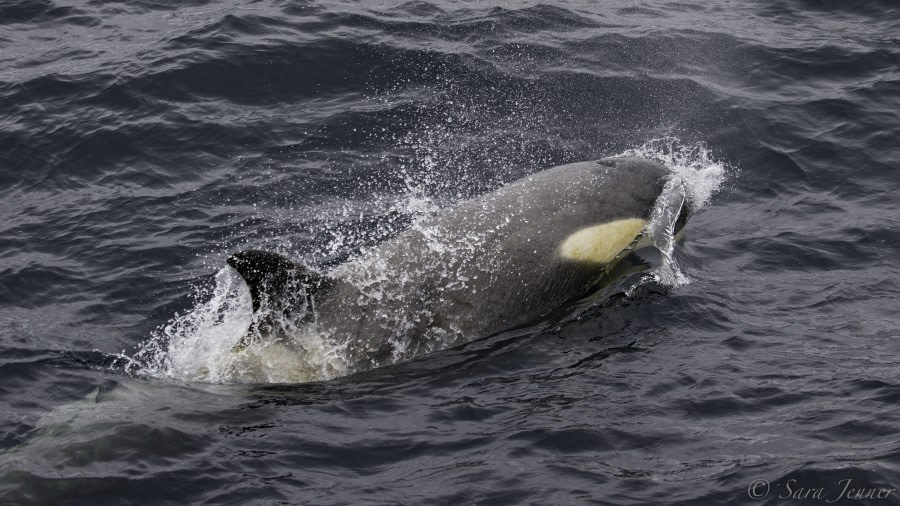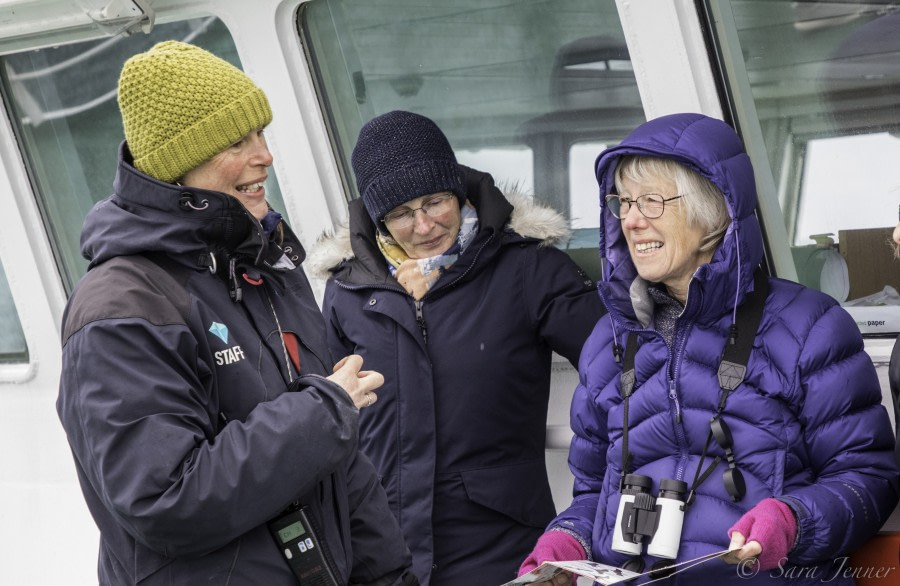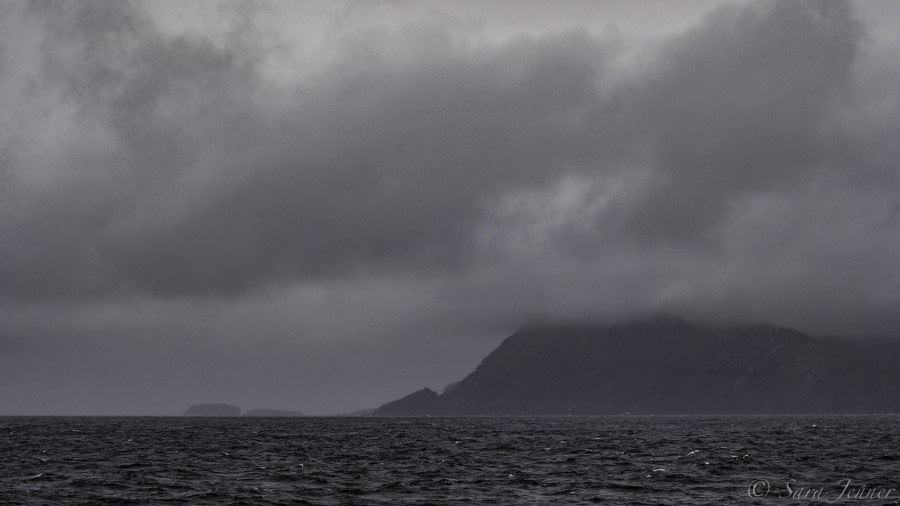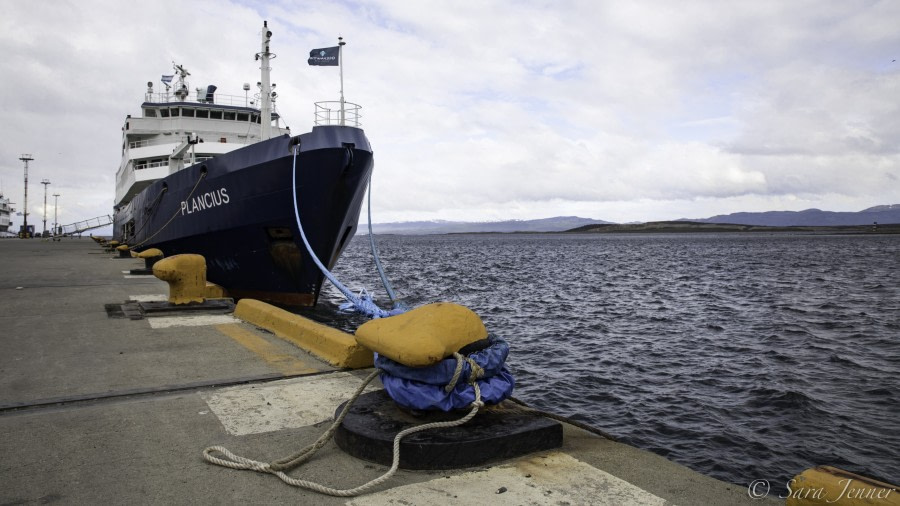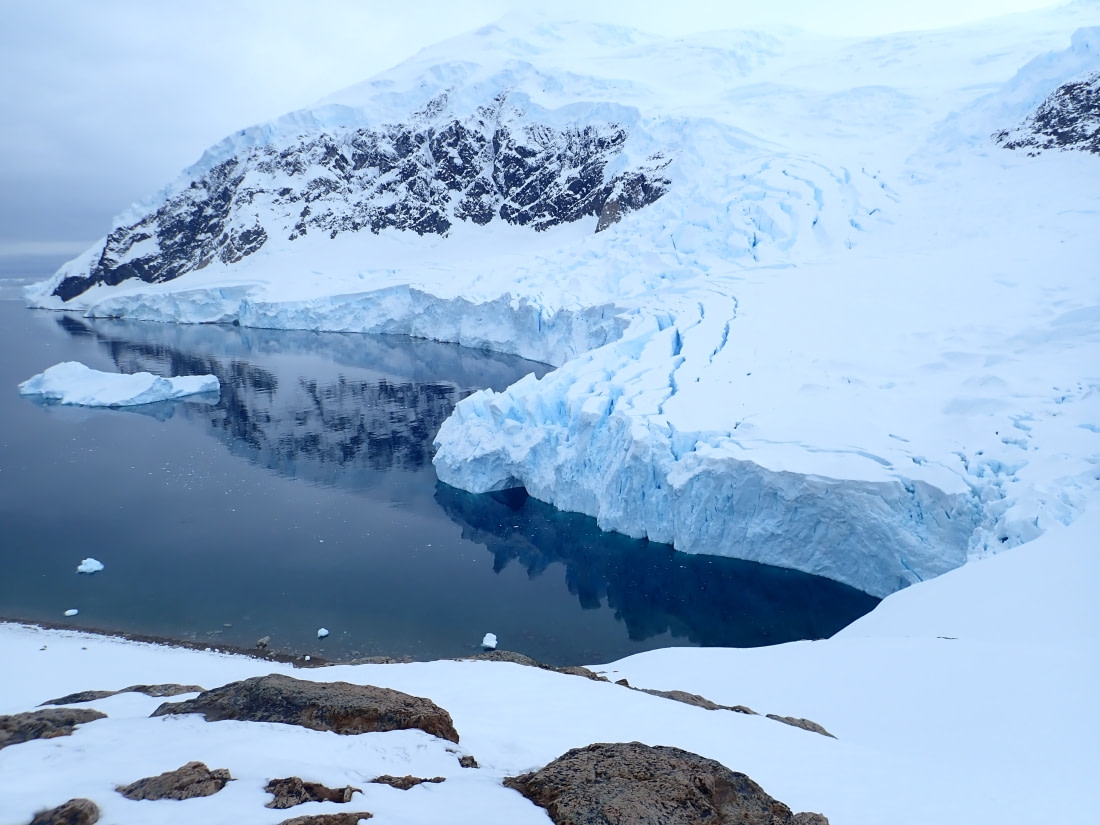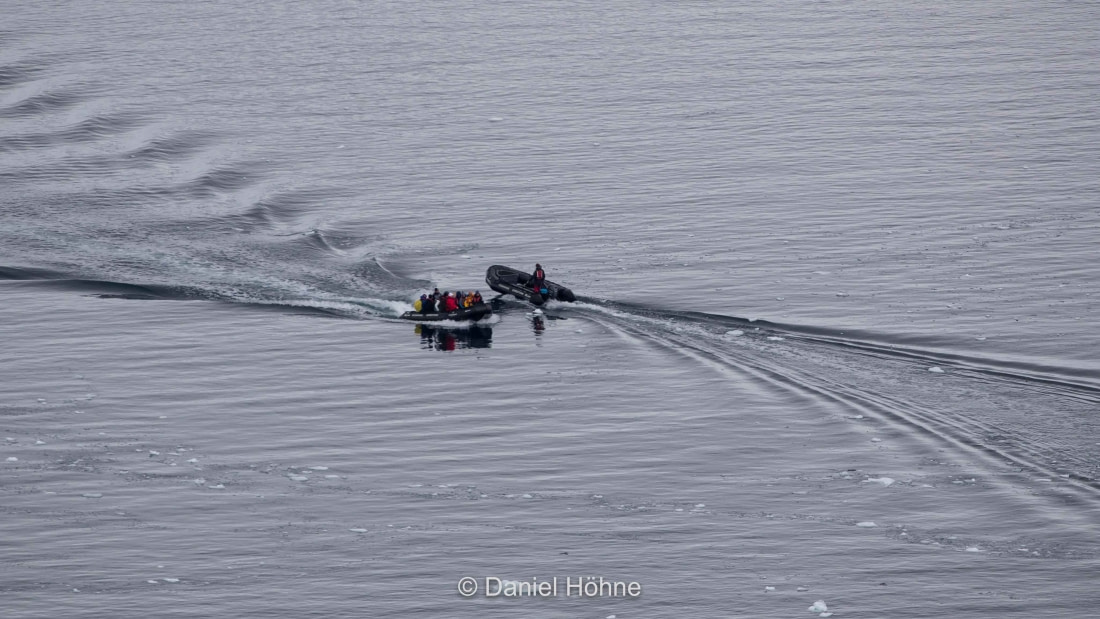| Date: |
27.11.2019 |
| Position: |
64º 50.1’ S / 062º 50.7’ W |
| Wind: |
ESE 8 knots |
| Weather: |
overcast |
| Air Temperature: |
+2 |
The day started very early in the calm and colourful morning when the campers came back to the ship after the calm overnight at Leith Cove. After breakfast we left the ship and jumped onto the zodiacs for a cruise in a quite choppy sea around the Melchior Islands. In the shelter of the curved shoreline of the islands we got to enjoy lots of fishing kelp gulls, Antarctic terns and cormorants which pointed out the diversity and fertility of the area we were visiting. Crystal clear shallow waters also allowed us to see some sea stars on the bottom of the sea and the fast ice spreading from the shore was a large carpet for Weddell seals to rest. The Melchior Islands gave us the chance to experience the Antarctic wildlife, landscape and weather on our very last Antarctic excursion.
After a Mexican lunch we attended Chloe’s talk about the wonderful life underwater generally hidden and mysterious to most of us. Soon after she opened our eyes to that part of the oceanic life, we were honoured to witness a display of some of the most conspicuous inhabitants of the ocean, but also hard to find in such a vastness. Ali’s voice came over the PA system: we have orcas around the ship! And in fact, there were not just a couple of them. A group of more than twenty orcas in the company of two Minke whales privileged us. We had an incredible time moving around the ship while they showed up from every side and repeatedly appeared and disappeared under our feet, making us accept without complaint the freezing sensation taking over our bodies. This was probably the most exciting and glorious moment of the trip for many of us, and an incredible way to say goodbye to this amazing continent.
Kayaking Trip Log
As every trip begins, many passengers start to ask about timings, clothing, the perfect spot, how many layers do they have to wear, is it cold outside, or is it going to be wet during the kayaking experience…many questions, but nothing better than to put all your gear on and find out by yourself. After a safety briefing from our kayak guide, Alexis, including how everything works and operational procedures, we were divided into six groups of 14 people plus our guide who would venture out during the mornings and afternoons over the next few days.
This Antarctic Explorer´s Voyage was for all of us and this time we visited different areas more exposed to the wind and far north in the Peninsula. The upcoming days will belong to us for ever. We were able to paddle in different places like Valdivia Point, Portal Point, Paradise Harbour and around the Argentinian Brown Station. We were kayaking at Neko Harbour, immersed in an ocean full of growlers of ice that came from the calving glaciers off one of the most beautiful scenarios of the Antarctic landscape. We kayaked to Useful island and circumnavigated it, with a beautiful group of Greeks who paddled in these frozen waters of the southern ocean for the first time in their warm lives.
We saw Antarctic terns, humpback whales, crabeater seals, weddell seals, a leopard seal, cormorants, sheathbills around the huts and penguins colonies; gentoo, adelie and chinstrap penguins from a special spot: our quiet kayak.
Kayaking means freedom of operation, silence, being closer to the water, and the environment. It offers a unique perspective and the opportunity to understand from the bottom of the glaciers and cliffs the real scale of Antarctica´s mountains and surroundings.
It was a pleasure for Alexis, as your guide, to have the chance to introduce you to this part of the world that belongs to all of us and more importantly, depends on our actions and their consequences. For now, think about keeping this pristine continent as it is. That could be the best way to behave knowing that is home to many species. It’s fragile and in need of eco-friendly actions from humans every day.
A few words from Alexis: Enjoy Life. Respect others. Leave no trace. Come back home with a good message for your friends and family. Nature rules the world.
